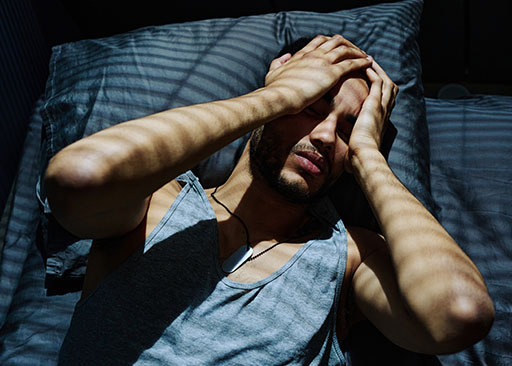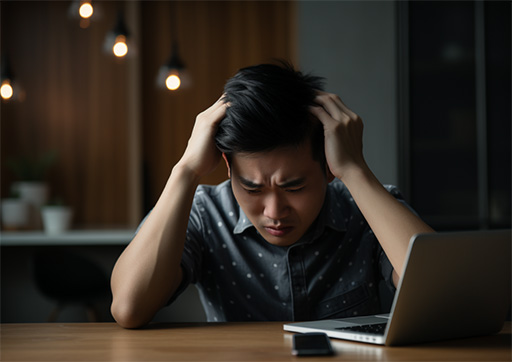Withdrawal Headaches And How To Prevent Them

To reduce the possibility of headaches, slowly taper off the substance or experience it over several weeks rather than stop it all at once. It will allow the body time to adjust and minimize any potential discomfort.
Caffeine Withdrawal Headaches
Caffeine withdrawal headaches are a common side effect of stopping or reducing caffeine consumption with fewer cups of coffee or soda. These headaches typically occur within the first few days after cutting back on the amount of caffeine and can persist for up to two weeks.
They tend to be milder than regular headaches and typically improve with time as the body adjusts to less caffeine. The body naturally adjusts by producing more of the neurotransmitter serotonin. Serotonin is responsible for regulating mood and irritability.
When people stop consuming too much caffeine, they may also experience insomnia symptoms. This is because caffeine withdrawal disrupts the natural sleep cycle and can cause difficulty falling asleep.
Relief From Caffeine Headaches
People can do a few things to relieve caffeine withdrawal symptoms: drink plenty of water and fewer caffeinated beverages, take over-the-counter painkillers or ibuprofen, and sleep with extra pillows. If the headaches are severe, a doctor may prescribe medications such as diazepam or phenytoin.
Nicotine Withdrawal Headaches
Nicotine withdrawal headaches are a common complication of quitting smoking. They usually peak within the first two days after quitting and may last up to four weeks. They can be severe, with pain on one side of the head and nausea or vomiting.
One theory is that pain is caused by increased pressure on one side of the brain due to reduced blood flow. Another explanation is that nicotine withdrawal symptoms result from changes in nerve function.
The nerves associated with nicotine headaches are thought to be the same as those affected by pain. When these nerves become overworked, they can cause pain on one side of the head.
Relief From Nicotine Headaches
Patients should drink plenty of fluids to avoid dehydration and try relaxation techniques such as meditation or yoga. If the headaches are severe, patients may need to take over-the-counter pain medications such as acetaminophen or ibuprofen.


Alcohol Withdrawal Headaches
Alcohol withdrawal headaches are a common symptom of alcohol abuse and dependence. They usually peak within the first few days after quitting drinking and may last up to a week.
The pain can be severe, with patients reporting intense throbbing or pounding in the head, often accompanied by nausea and vomiting. Some people also experience restlessness, lightheadedness, dizziness, or sleep problems during this period.
People with alcohol dependence often experience difficulty falling asleep or staying asleep after quitting drinking. It is likely because alcohol withdrawal can cause intense anxiety and tension, as well as a feeling of being overwhelmed.
Relief From Alcohol Headaches
Some people find relief by taking over-the-counter medication such as ibuprofen or acetaminophen. Others resort to drinking cold water or ice chips to soothe their heads. Sleeping with a fan helps alleviate the symptoms of alcohol withdrawal headache, while others use relaxation techniques such as yoga or meditation to sleep soundly through the night.
Social Media Withdrawal Headaches

Once someone becomes hooked on social media, breaking free and getting rid of all the posts and notifications addiction can be difficult. Withdrawal headaches usually last for around two days and are more severe when people first quit social media than later in their detox process.
Relief From Social Media Headaches
Some people find relief by using over-the-counter painkillers or taking ibuprofen. Others find relief by drinking lots of fluids, going for walks, or spending time with friends and family.
During a walk, the person’s brain can relax and release endorphins, hormones that have pain-relieving effects. It is why walking can be such an effective way to relieve social media headaches: not only does it help clear your head and gives you some physical activity.
Spending time with loved ones allows your brain to release oxytocin, the “cuddle hormone.” Oxytocin has been shown to have several pain-relieving effects, including reducing inflammation.
There is mixed evidence on the efficacy of over-the-counter painkillers or ibuprofen for social media withdrawal headaches. Some have found that these medications effectively relieve headaches, while others have not found a significant effect. Different people will likely respond to different types of medication.
Preventative Measures
There are a few things that your patient can do to help prevent withdrawal headaches. First, drink plenty of fluids during and after detoxification. It will help flush out any toxins that may be causing the headache.
Additionally, avoid stimulants, as these can aggravate the condition. Another thing your patient can do is to take ibuprofen medication or other pain relievers, such as aspirin, before bed if they experience headaches during detox. It will help reduce the intensity and duration of the headache.
Finally, make sure to have them keep a journal of any symptoms that occur so that you can track whether they are getting better or worse over time. Important information is the type of headache (pressure, throbbing, or both), symptoms (severity, intensity, and duration), and the medications taken for headache relief.
Relief Options Without Medication
There are many ways to relieve headache pain without resorting to over-the-counter medications. Some tips include drinking plenty of fluids, resting your head on a pillow with a raised neckline, and using ice packs or cold compresses on the temples.
Drinking Fluids
Drinking plenty of fluids can help reduce headaches because it helps flush out the blood vessels in your brain. When the blood flow is restricted, headaches are more likely to occur.
Lots Of Pillows
Resting your head on a pillow with a raised neckline can help reduce pressure on the temples and, thus, reduce headaches. It is because when pressure is relieved from the temples, it allows blood to flow more freely to the brain.
Ice Packs
Ice packs can help to reduce headaches by reducing the inflammation that is often associated with them. Inflammation is a common cause of headache pain, and ice packs can help reduce the brain’s inflammation.
BioScan And Withdrawal Headaches

